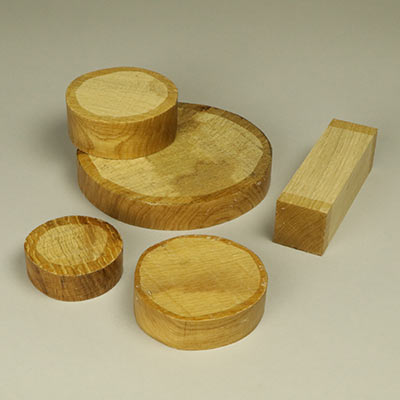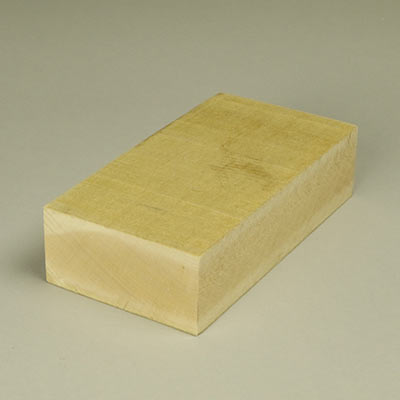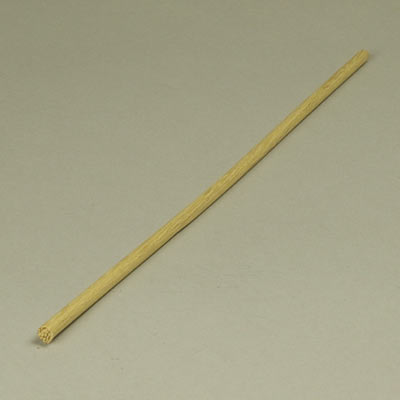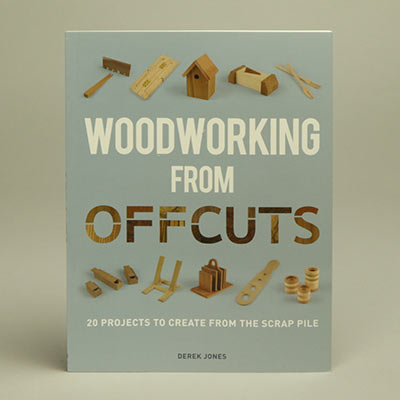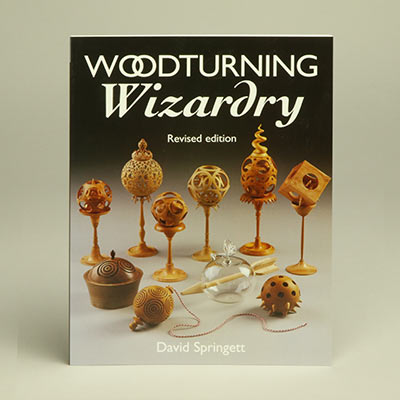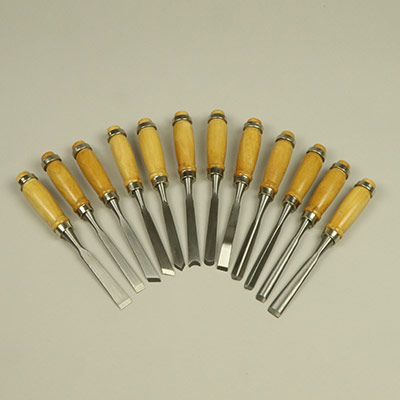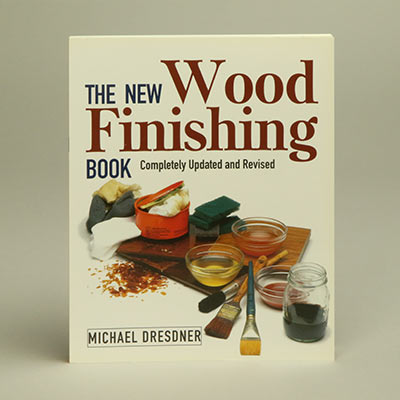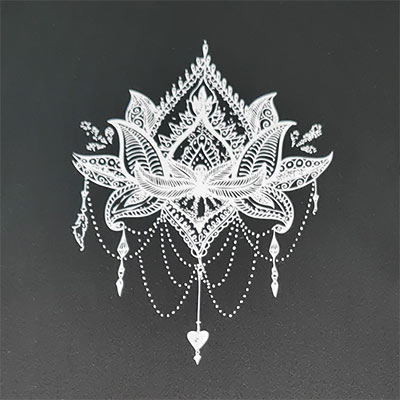
NEWS 2021
[top]
December 2021
METALLIC DRY TRANSFERS

We have extended our Dry Transfer Service to now offer metallic finishes.
These transfers give the look of unpolished metal, which sit between our standard colour transfers and foil transfers in terms of finish.
They are for anyone requiring a metallic look that is not too shiny, great for product design, prototype, sci-fi, model railway and radio control modelling.
We can offer any colour that has a metallic pantone, or similar, reference.
All our transfers are made in-house, so you can consult with our technician to make sure we match your exact requirements.


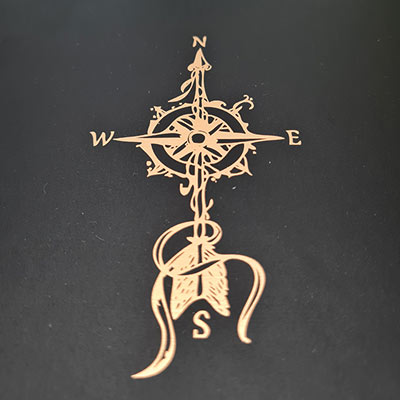
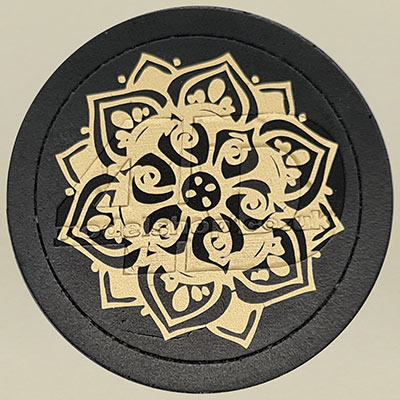

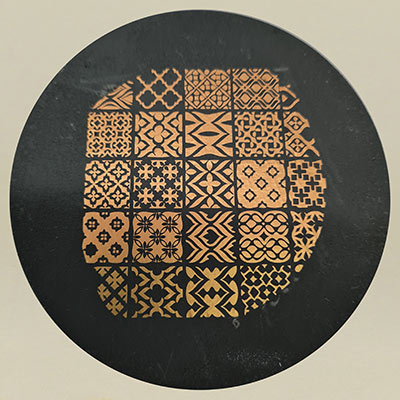
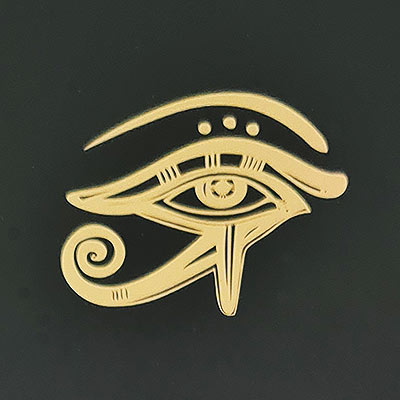
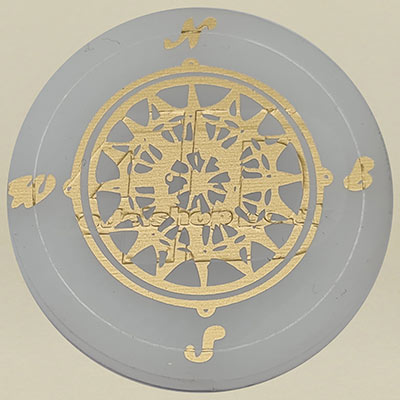
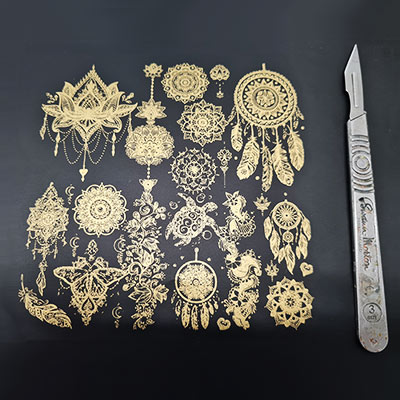
[top]
November 2021
MINIATURE HOUSE KITS

We have added a number of new DIY Miniature House Kits to our existing range.
These DIY mini house kits are at approximately 1:20 scale. All materials are included, including printed material, a step-by-step manual and LED lights (lithium batteries are included). Additional tools will be needed to complete the kits (rule, scissors, craft knife, needle-nose pliers, pencil, black pen, small screwdriver).
They would also make a great present for those considering modelmaking as a career or hobby, these kit will provide hours of intricate and interesting entertainment.
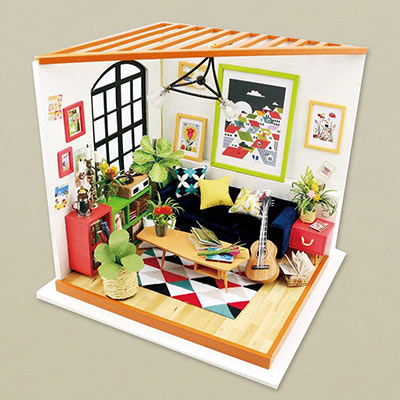
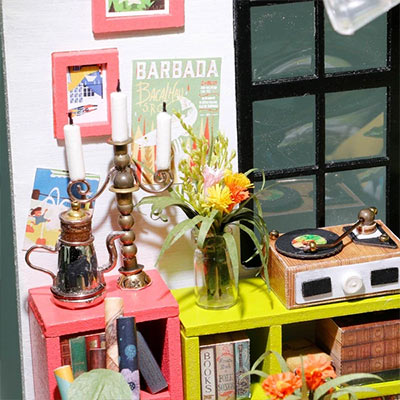
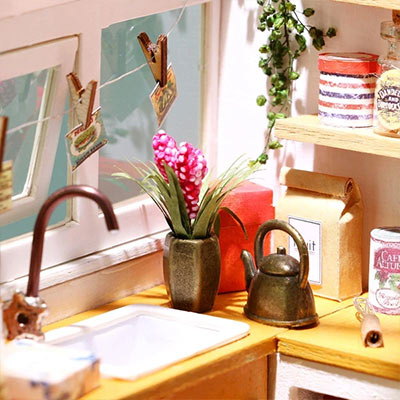
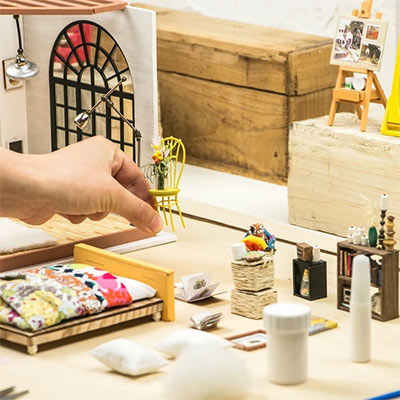

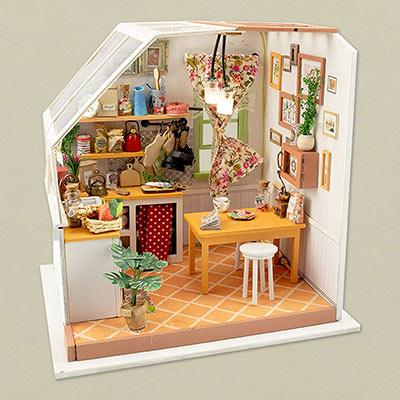


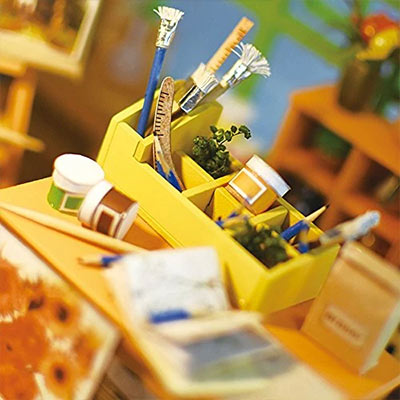
[top]
October 2021
DAPPLED GREEN TREES

We have introduced dappled green deciduous etched model tree to our standard range.
These trees give the illusion of light streaming through the branches, of maybe a tree during a change in seasons.
The foliage is a mix of our light, medium & dark coloured textures that create the speckled leaf effect.
- 35mm, 42mm, 50mm, 60mm & 75mm are available as standard trees.
- Other sizes (6mm - 200mm) are available through Build-a-Tree.
- The standard dappled green trees come with a dark brown trunk.
- Other trunk colours (brown, fawn & white) can be ordered through Build-a-Tree.
These trees give you another option if you want to add interest & variety to a planting scheme.
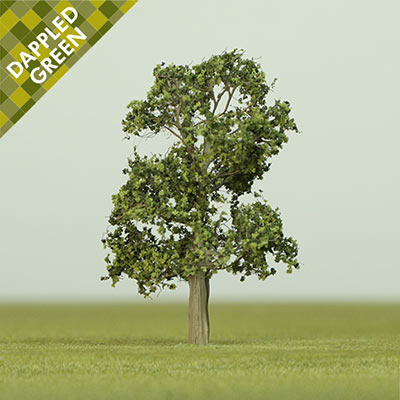
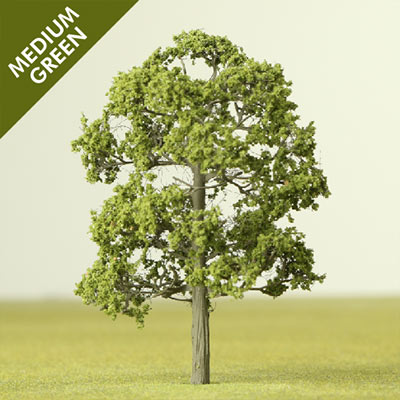
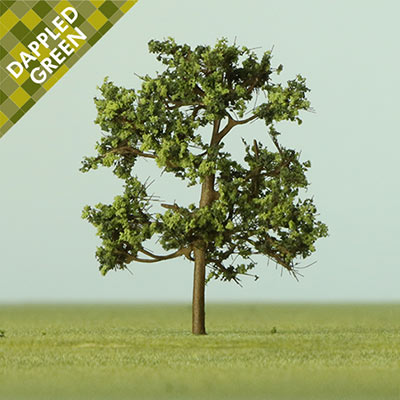
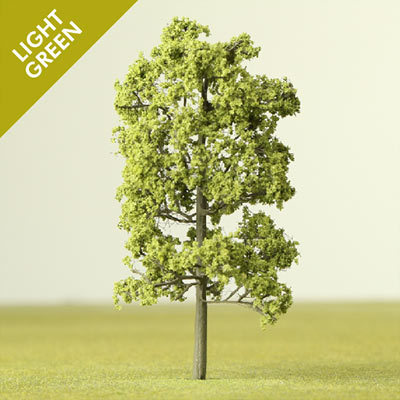
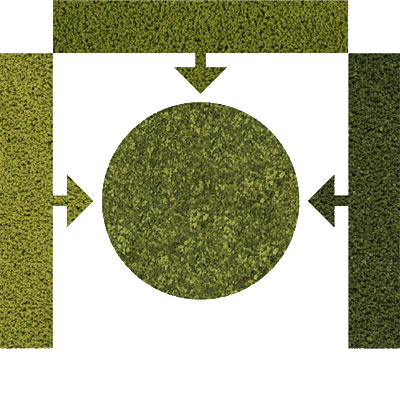
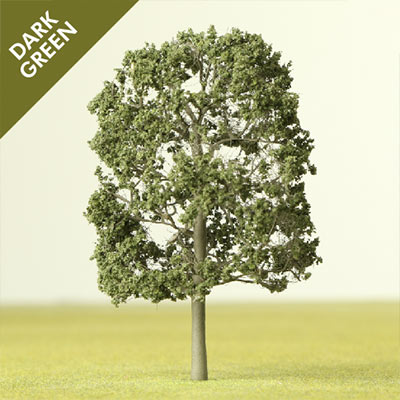
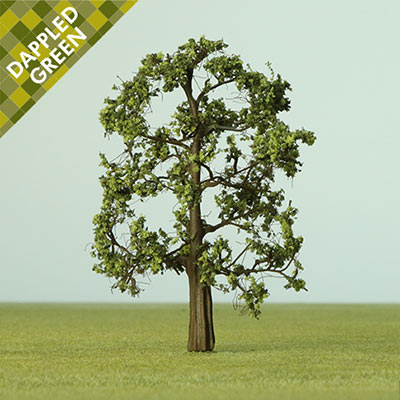
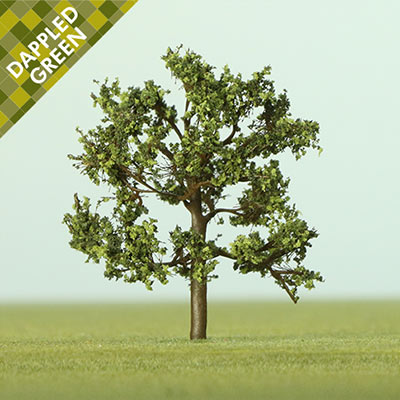
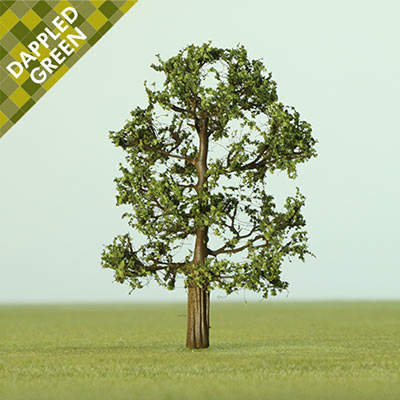
[top]
September 2021
DARK TRUNK TREES

We have introduced a new dark brown colour trunk to our Build-a-Tree website tool.
You now have 4 choices: white, fawn, brown & dark brown.
These can be matched with 46 different foliage colours in a range of heights from 6 - 200mm, making 2,892 tree options available to you.
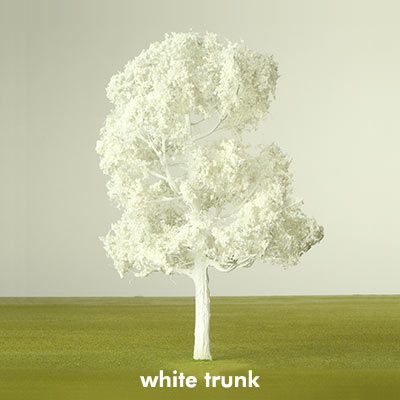
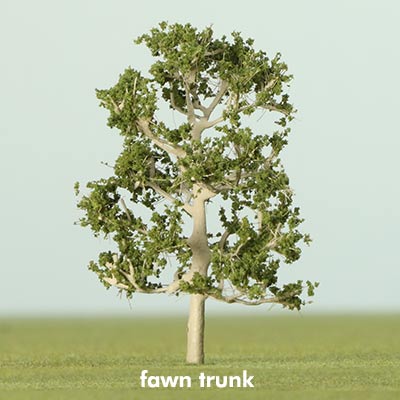
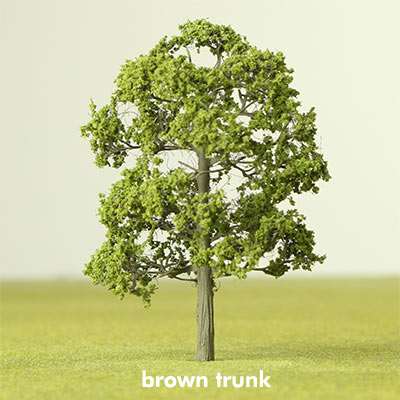
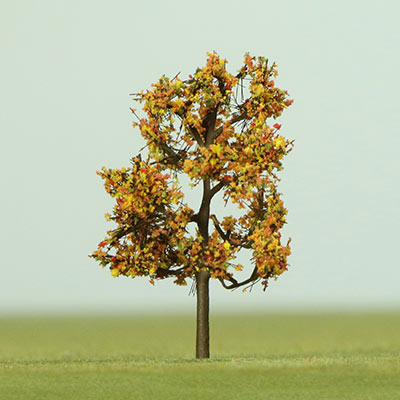
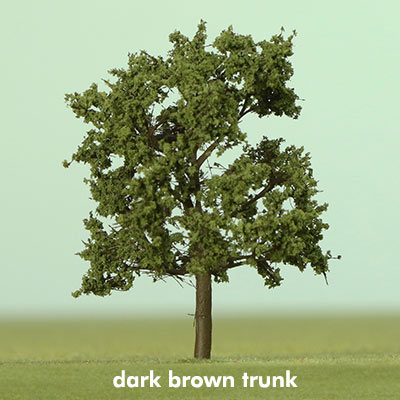

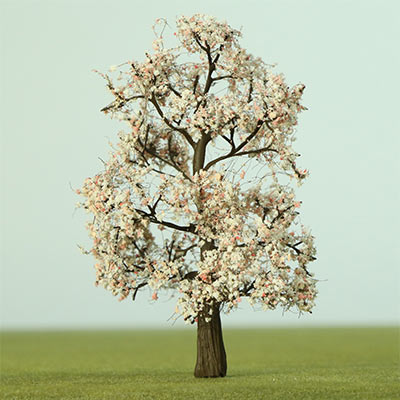
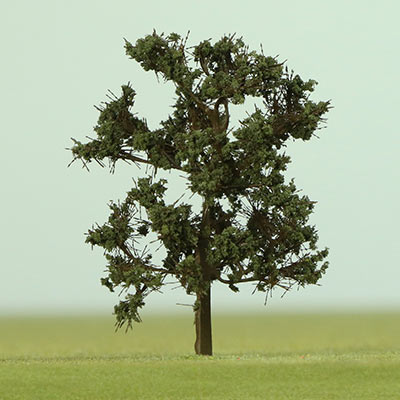
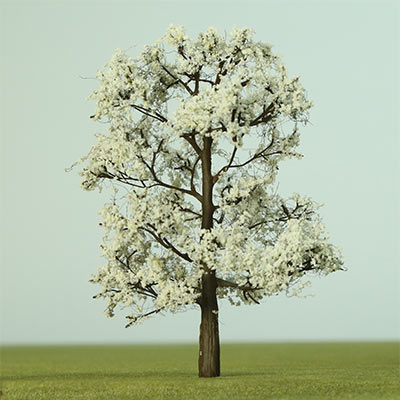
[top]
August 2021
POSTCARD MODELS

This month we have introduced a selection of N scale (1:148 / 1:150) & Z scale (1:220) self assembly Postcard models.
These buildings can be added to model railway layouts or as part of a miniature diorama, which can be embellished with landscaping products such as model trees and ground cover items to add realism & context.
We think these Postcard models would make a great gift for anyone who is creative, or has personal interest in the particular building.
What about bride / groom favours? Either the kit or the finished piece (as if you don’t already have enough to do when organising your wedding…) Each table can create a mini town.
Postcard models are perfect for group making sessions for all ages (14+), with set up requiring very little space. Small and light – perfect for sending a slice of England as a gift to your friends overseas.
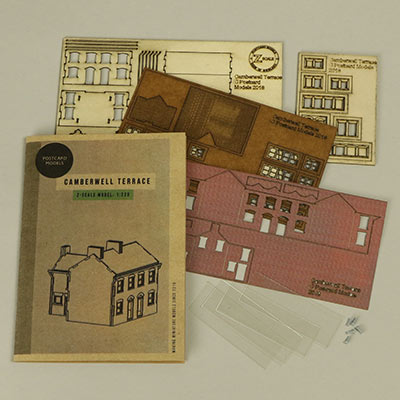
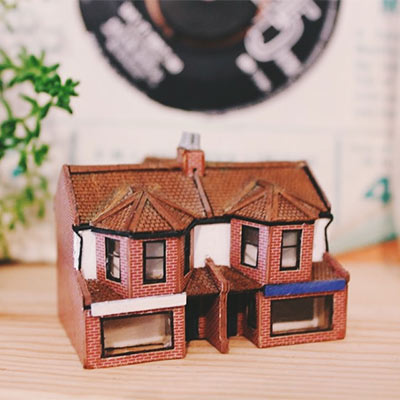

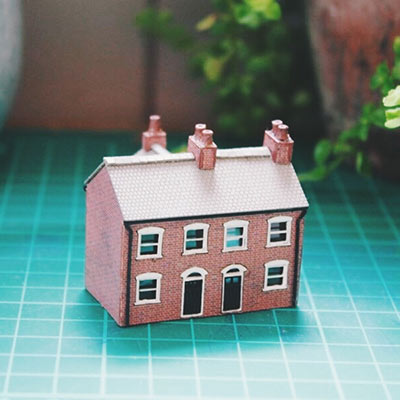
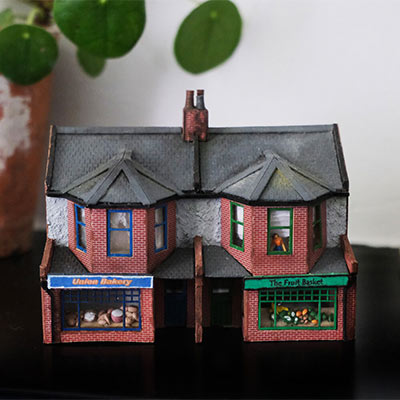
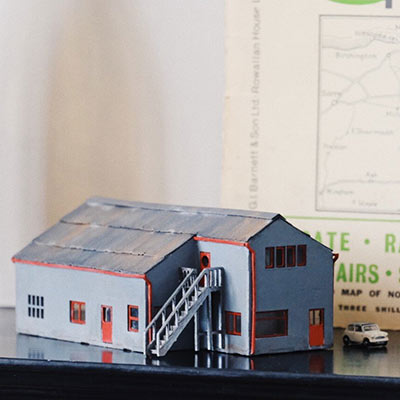
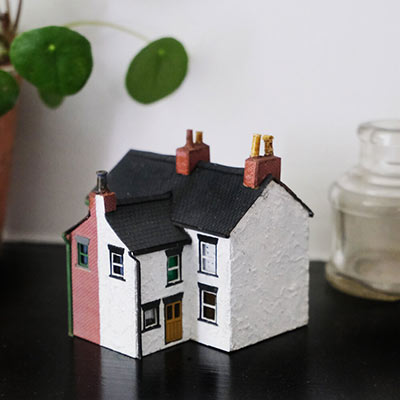
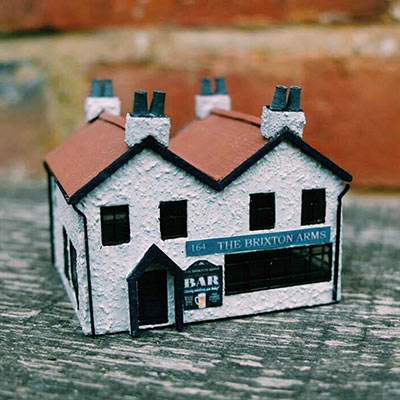
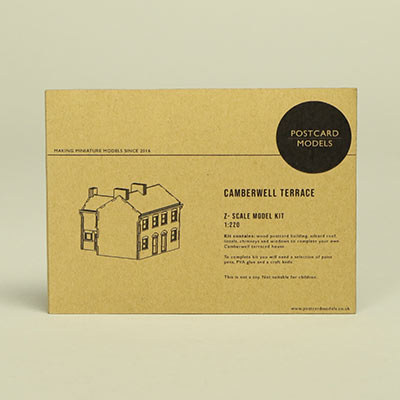
[top]
July 2021
STUDENT KITS

If you are a technician or lecturer on a creative arts course which involves 3D modelling of any form, we are in a great position to provide your new students with the tools & materials needed to get them started.
In the past we have provided 'starter kits' for many courses across a number of disciplines including: Model Making, Architecture, 3D Design, Product Design, Interior Design, Furniture Design & Theatre Design.
Typically the kits include adhesives, tools & materials from the following:
Adhesives: Plastic Weld, PVA glue, contact adhesive, superglue, kicker spray, double sided tape, masking tape, Spraymount & Photomount.
Tools: Cutting mat, scalpel & blades, safety rule, steel rule, engineers square, needle files, propelling pencil & fine hair brushes.
Materials: Greyboard, foamboard, PVC sheet, acrylic sheet, mountcard, corrugated card & mirror card.
You can choose items from here, but you have the whole of our inventory is at your disposal.
Just send a list to feedback@modelshop.co.uk with an estimate of how many kits you may require and we will send you a quote.
As well as receiving our existing 10% educational discount, we will endeavour to increase this depending on your requirements.

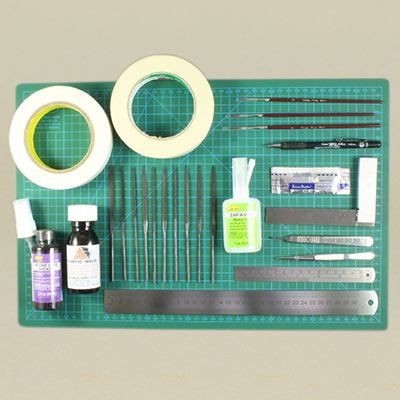
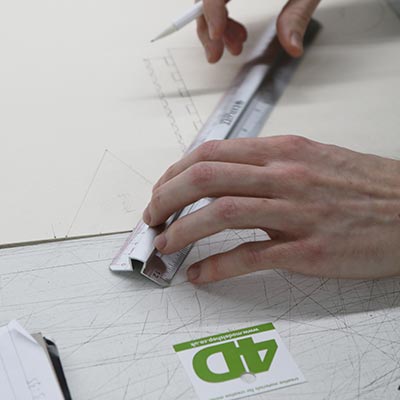
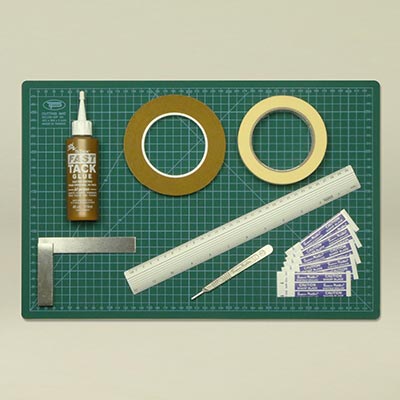
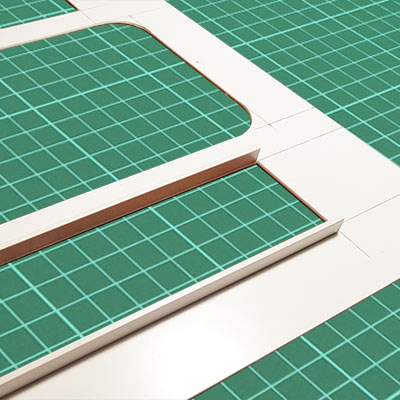
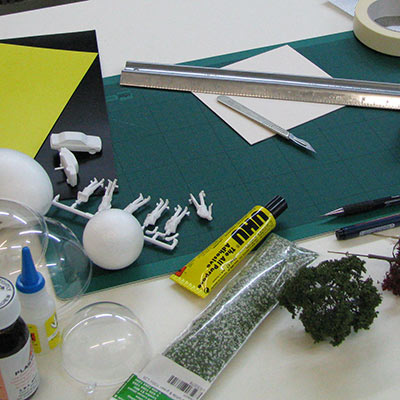
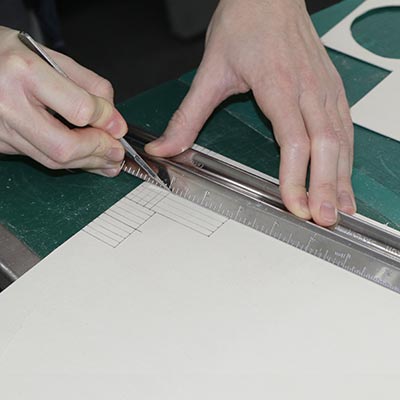
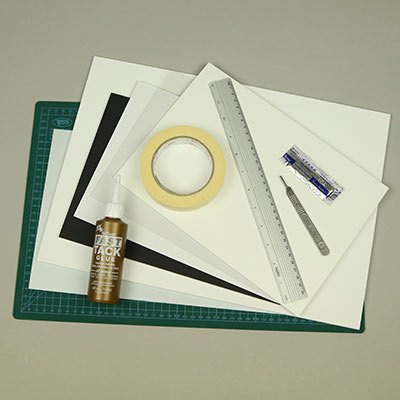

[top]
June 2021
LASER CUTTING MATERIALS

We have introduced 3 new products to our already extensive arsenal of Laser Cutting Materials.
PolyBak Laserboard, manufactured in America as a backer for veneers, has been taken up by many US model makers. It’s thin, remains strong even when large areas are cut away and, unlike many other card products, does not show burn marks on the edges.
Our second new material is FIBRANOR, a 3.0mm laser grade black MDF that’s perfectly flat and black throughout. It has an excellent strength/weight relation and can be easily glued, bent, printed, veneered, coated and laser cut. Additionally, it’s sustainably sourced and has low formaldehyde content.
The last of the new laser cutting materials is Green Cast, a 100% recycled and 100% recyclable cast acrylic sheet. Glossy on both sides, this robust material is resistant to scratches, abrasion and UV light.
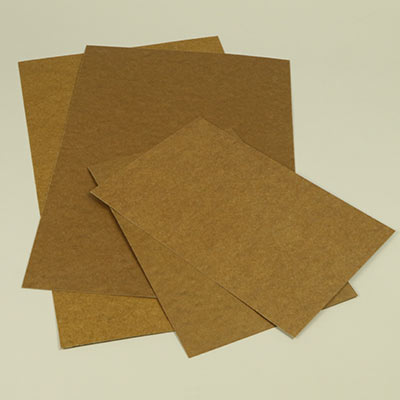
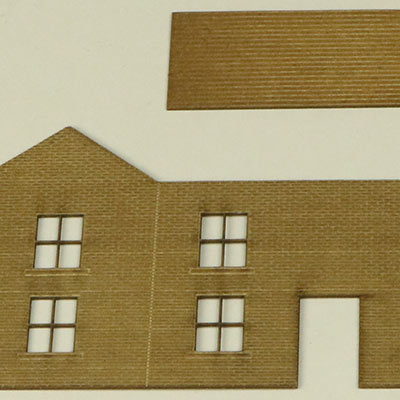
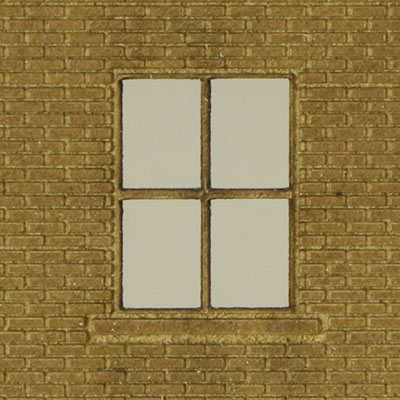
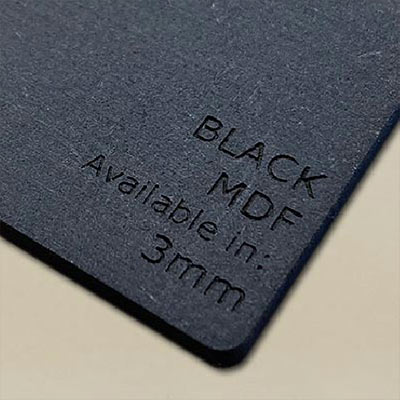
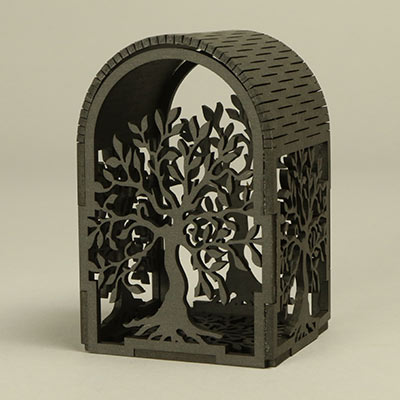
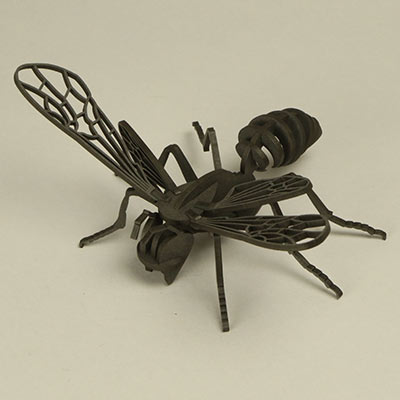
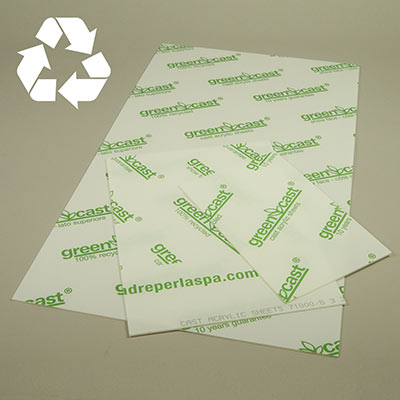
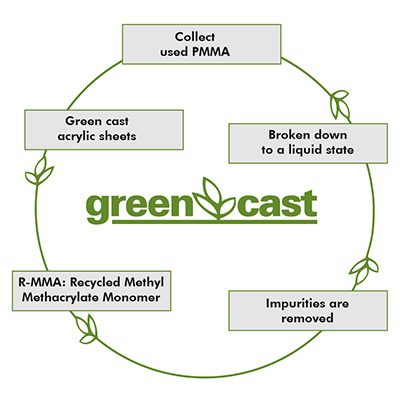
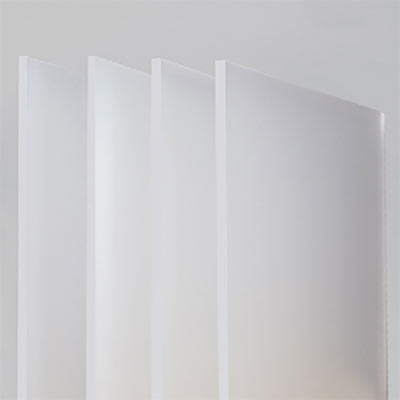
[top]
May 2021
DARTMOOR DIORAMA

How we build our Dartmoor diorama:
- Keramistone clay was pushed into a Rock mould, making sure the base was flat, then knocked out of the mould and allowed to dry for 24 hours. When dry the base of the rock was gently sanded with Wet & Dry paper.
- The baseboard for the model and contours was made using layers of 6.4mm Plywood stuck together with PVA glue although the contours could have been made using foamboard or similar on a plywood base.
- Foam putty was then used to create the slopes between the contours.
- The Keramistone clay rock outcrops were then glued to the base using PVA and left to dry for a few hours. When dry more foam putty was put onto the base around the backs of the rock outcroppings and left to dry.
- The foam putty was lightly sanded to smooth out the slopes and then the grass areas were painted with Flock adhesive and the flock was applied using a Small sieve. Firstly we sprinkled small patches of Dark green flock and Beige flock to represent lush and dryer grass areas then covered the whole model with Grass mix flock and left it to dry for a few hours.
- When dry we knocked off the loose flock then using PVA glue we glued on patches of Mid green and Light green fine texture and finally added the sheep.
- The base edge was painted with Black acrylic paint to finish the diorama.
The diorama is currently on display in our shop.
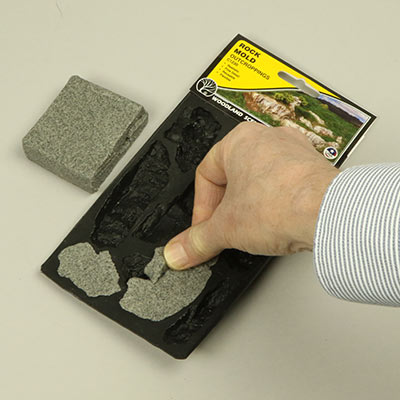
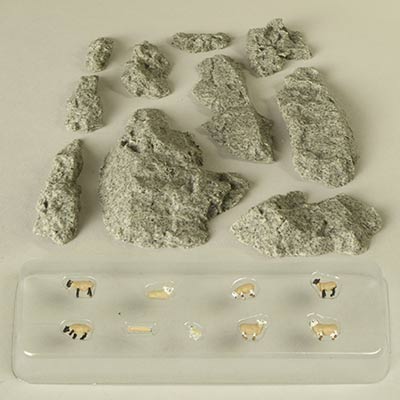
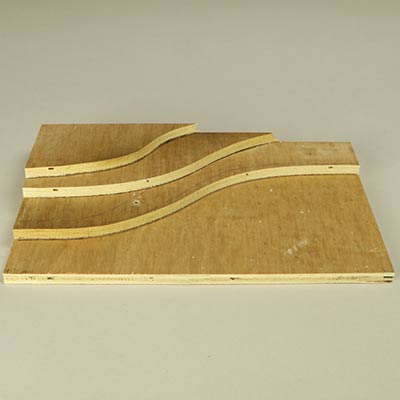
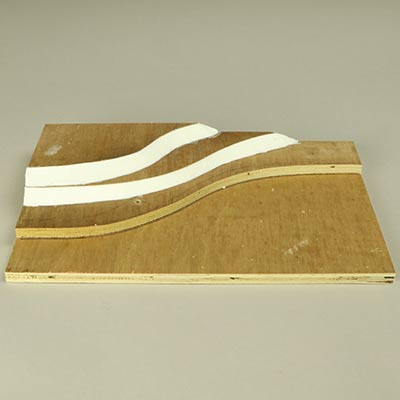
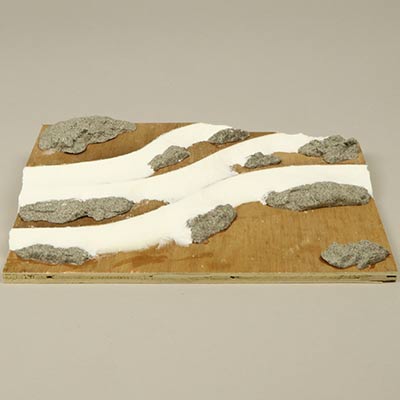
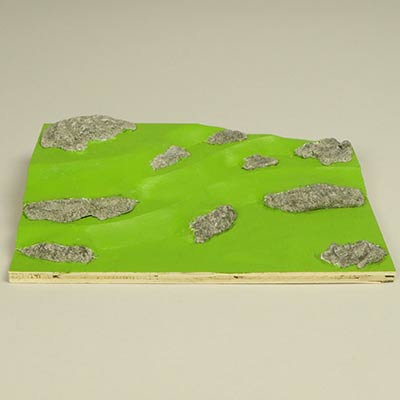
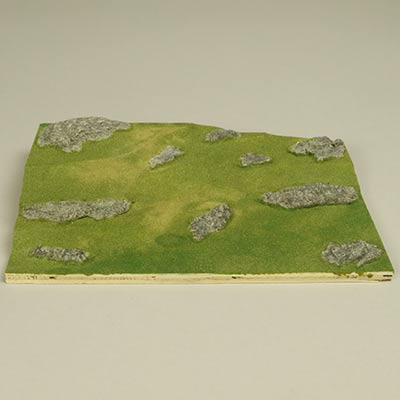
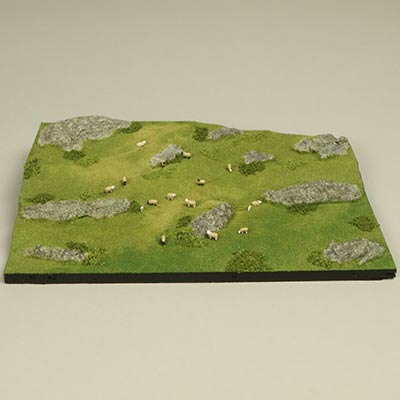
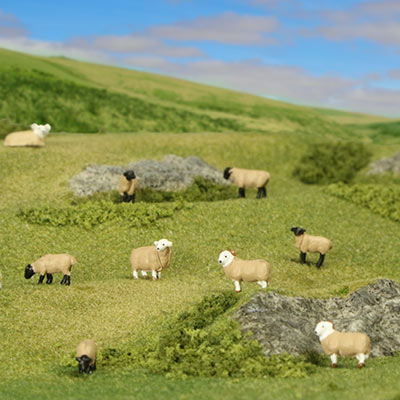
[top]
April 2021
WOODWORKING SUPPLIES

We have added a number of woodworking products to compliment our existing range of wooden model making materials.
Many of these products are aimed at wood turners & woodworkers, but we think model makers and hobbyists will find them a useful resource.
For instance, bowl blanks are handy sized pieces of kiln dried timber that could be used for model stands, bases for miniature dioramas or in shop display stands. The pen blanks, lime blocks, iroko dowel, sapele & tulipwood planks lend themselves to architectural model making as well as numerous design-build projects.
You could, of course, just use them as woodworking raw materials, for which we have added a number of dedicated books for tips and inspiration.
At the moment we are dipping our toes into the woodworking world, but if you would like us to further increase our range, we are open to suggestions, please contact feedback@modelshop.co.uk
[top]
March 2021
MAKING A SHORT FILM PROP 'ALIEN ARTIFACT'

Graeme Webb from Arcimboldistudios was tasked with making an ‘Alien Artifact’ prop for a short film.
The brief was it had to be a very light prop but it should look as if it was made out of Iron, which had corroded over centuries.
Graeme started the build with a polystyrene ball, a soup can and yoghurt pot. The can and the pot were connected with wire, secured with PVA glue. Kapa line foamboard were cut to form the flanges and fins; small beads were used to 'rivet' the fins to the flange.
The first coat of spray primer conveniently eats into the polystyrene ball, giving it a corroded look.
Next, Graeme added a coat of grey acrylic paint as undercoat for Red Oxide spray paint iron effect. The leaked liquid effect was achieved using acrylic medium embedded with coarse crystal salt.
Earth coloured acrylic paints, metallic acrylic paint, ground pastel pigments and a final coat of acrylic matt medium was used to give the finished effect.
The prop not only met the brief of looking like it had been floating about in space for centuries, but weighed in at only 108g.
4D materials used: 100mm Polystyrene ball, PVA glue, 19mm balsa square rod, 10mm KAPA line foamboard, Grey Hycote primer, acrylic paints, Graphite grey spray paint.
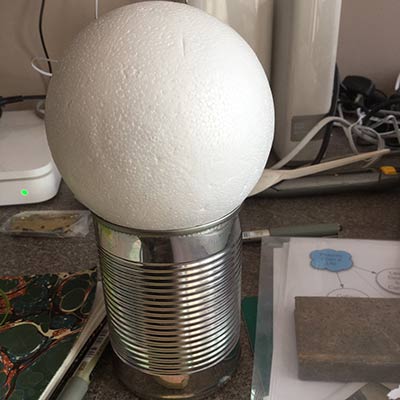

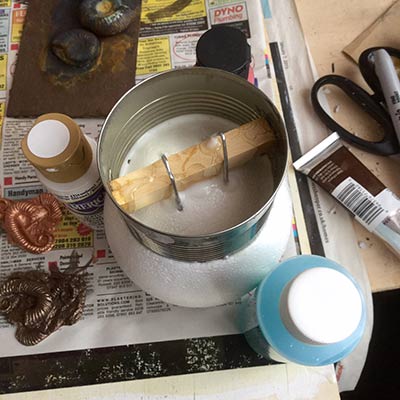
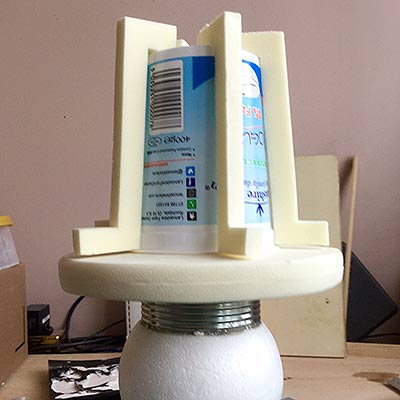
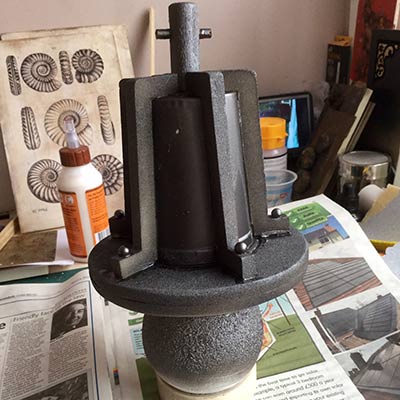
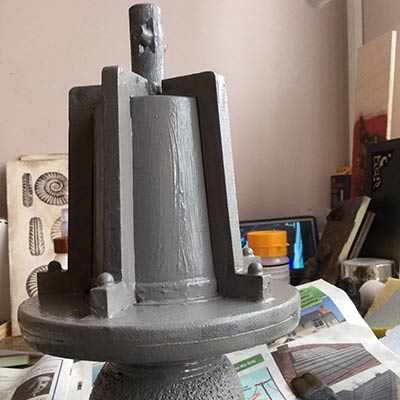


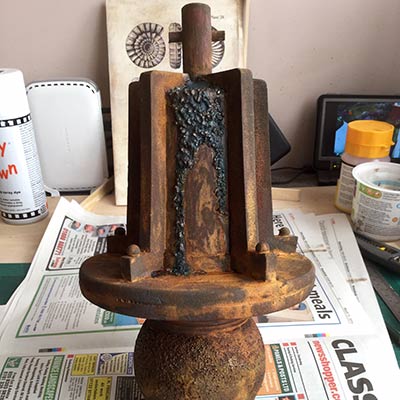
[top]
February 2021
SS TASMANIA STAR ETCHING

Tim Chapman joined the crew of the SS Tasmania Star as a 17 year old deck boy on the 12th June 1973.
The ship, a refrigerated cargo liner, carried goods around the world from 1950 to 1975.
Tim completed 3 deep sea voyages upon her, sailing to New Zealand to bring back up to 300,000 frozen lambs a time for the UK market.
Tim's time on the ship took him all around the world, visiting countries such as New Zealand, Panama Canal, Chile, Fiji, Samoa, South Africa, Ghana, Nigeria, Canary Islands, Curacao and Pitcairn Island.
To commemorate his time with Blue Star Line, Tim commissioned our workshop to produce a brass etched plaque of the ship.
Working closely with our staff, Tim was constantly consulted during the preparation of the artwork. Adjustments were made with line weights and details to be included.
The only colours Tim wanted on the finished etching were on the ensign flag and funnel. Iain, our etching supervisor, suggested using vinyl to match the sharp finish of the half etched detailing.
Once the artwork was agreed, the ship was etched onto a sheet of 0.45 x 490 x 155mm brass and sealed with a clear lacquer to prevent tarnishing.
The completed etching is destined to be framed and hung on the wall of the Post Office that Tim runs in Yalding.
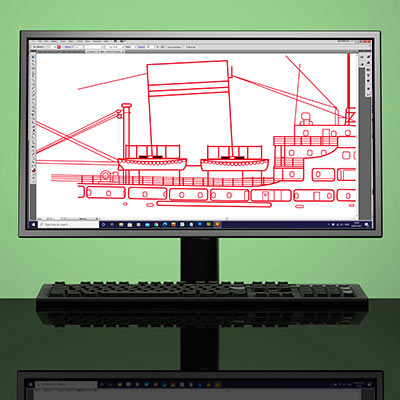
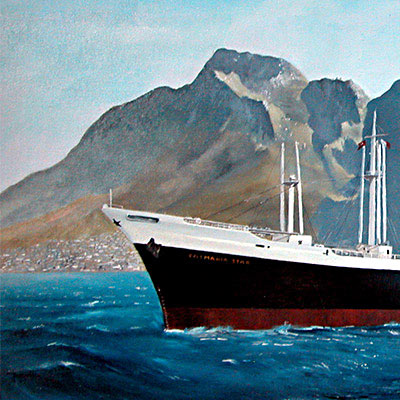
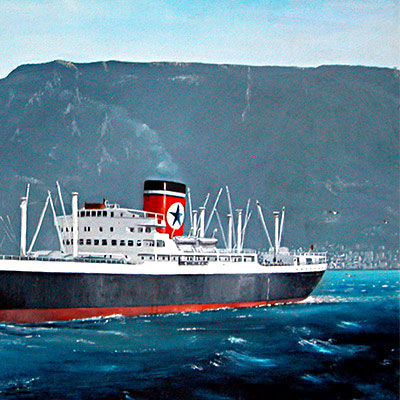
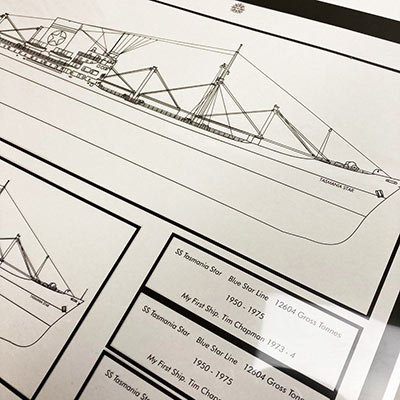
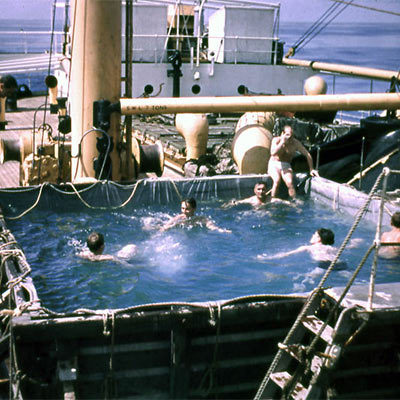
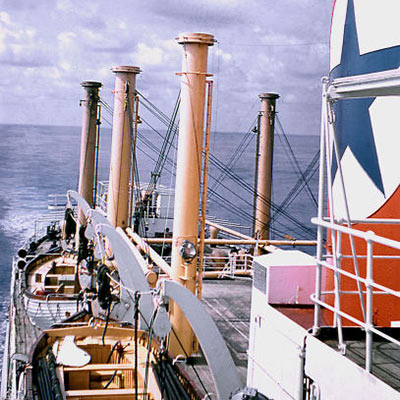
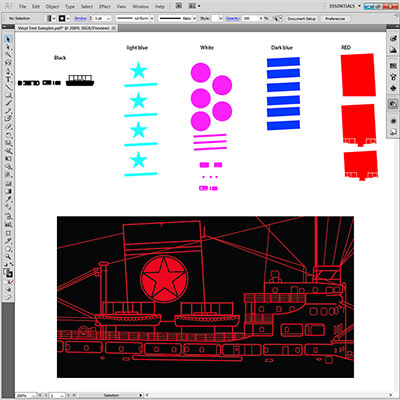
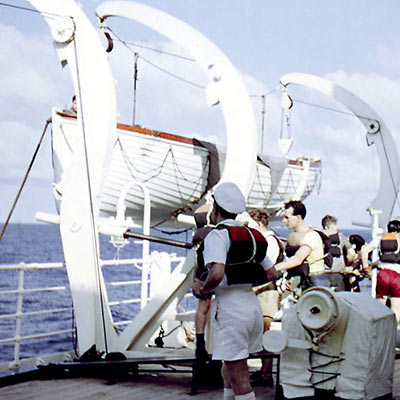

[top]
January 2021
MODEL MAKER TO HER MAJESTY

George Brown was a professional tech officer, or model maker, whose skills lead to a varied career producing all manor of models for film, exhibition, display and planning.
He started life in the Royal Navy (c1946) on ships such as the HMS Liverpool & HMS Triumph, where he developed his model making skills during the down time, carving & whittling. On leaving the service, George studied and worked on a farm in Royston, but had to give this up due to a back injury.
By the 1950's his interest in making led him to work at a model shop in Balham, possibly Mellings, where he worked on a model of the de Havilland Comet 4 for the 1958 Brussels World’s Fair (notable for the building of the Atomium).
Pupils from the neighbouring Henry Cavendish School had seen an 11ft wingless fusilage being made in the nearby workshop & rumors of a Balham Sputnik quickly began circulating.
George went on to work for Chris Melling Craftsman & Designers in Baker Street where he worked on models for exhibitions and aviation companies.
In the late 60's went for a job at the MGM studios in Borehamwood. At his interview and the boss, an ex Spitfire pilot, said 'see my Spitfire up there?' indicating the painting on the wall, 'make that and come back next week!'. He made it and got the job.
At MGM he worked on films such as Stanley Kubrick's 2001, a Space Odyssey, The Dirty Dozen, 633 Mosquito Squadron and Where Eagles Dare.
In the early seventies George joined the Department of the Environment in South Ruislip and became a Model Maker to Her Majesty until his retirement. He worked on many infrastructure projects including the Saltash underpass and the dreaded M25.
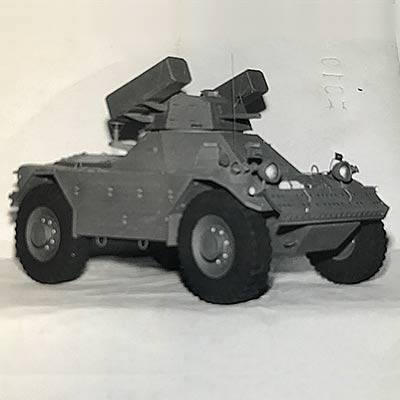

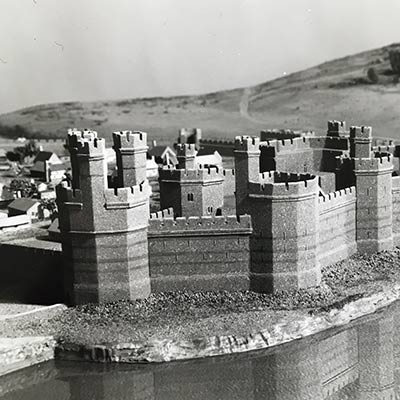
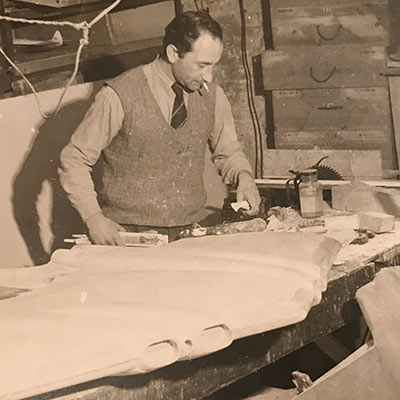
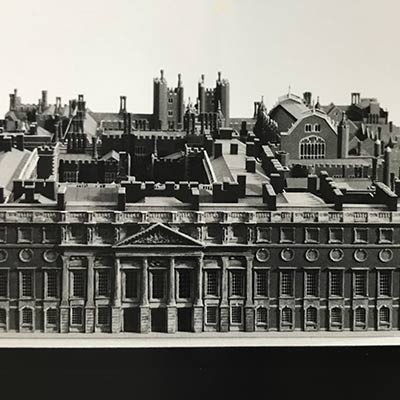
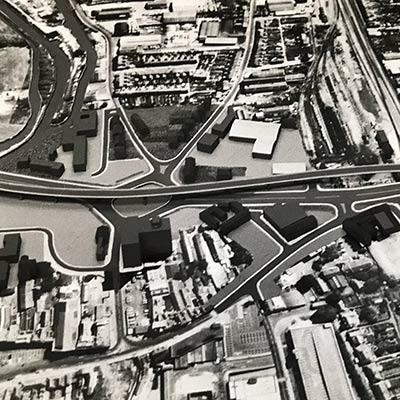

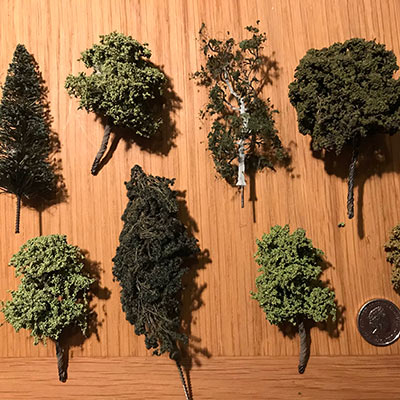
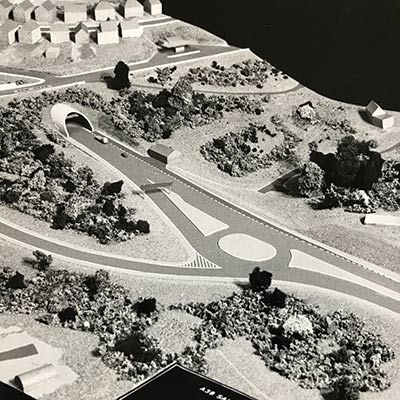
[top]
4D modelshop uses cookies to help ensure your experience on our site is the best possible. Click here to read our Privacy Policy.
Please check the box to accept and close


